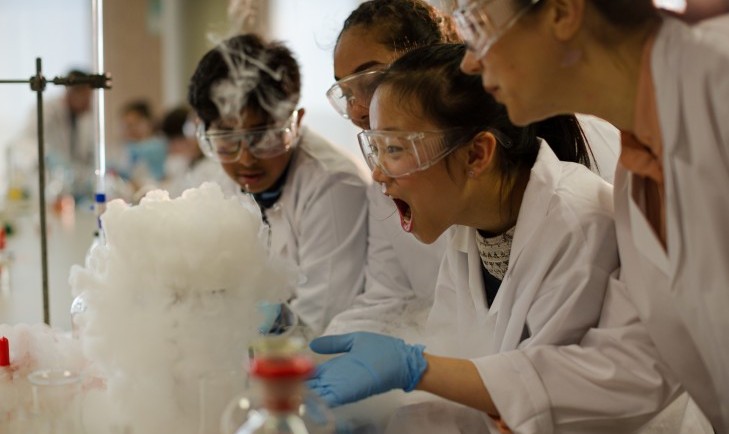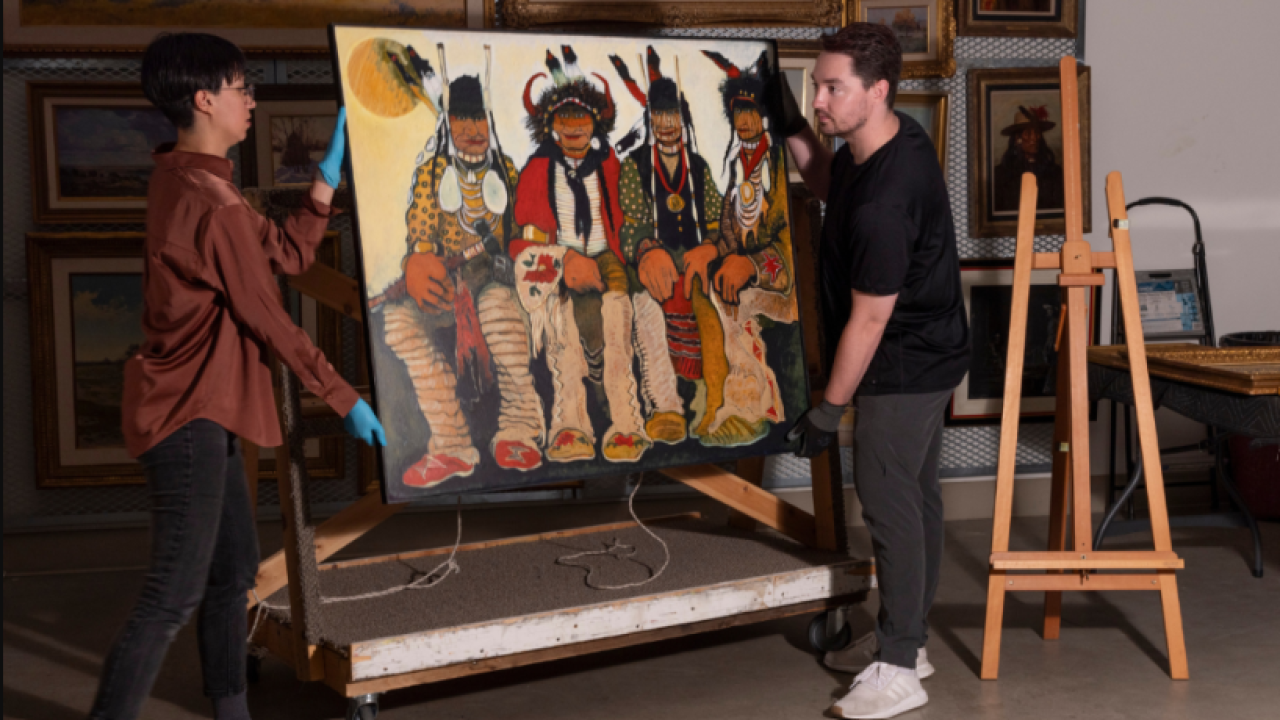09/07/23
Best of West: Advancing STEM education; A major investment in collaborative conservation; Transforming animal waste into energy; Engineered living materials; and a new Western Art installation

The Western Governors' Association keeps you updated on the latest news in the West. Here are the top stories for the week starting Sept. 4, 2023. (Photos courtesy of Adobe, David Baillot/UC San Diego Jacobs School of Engineering, and Keeara Rhoades).
With the new school year underway, many western communities have partnered with organizations to expand educational and workforce development opportunities for science, technology, engineering, and mathematics, better known as STEM.
The U.S. Environmental Protection Agency and Metropolitan State University of Denver, Colorado formalized a four-year partnership to recruit and train students from diverse backgrounds for careers in science, technology, engineering, and math.
NASA and the U.S. Department of Education (DOE) also signed a memorandum of understanding to increase access to high-quality STEM and space education for students and schools across the nation. As part of that agreement, the DOE provided The University of Nevada’s Raggio Center for Advancement in (STEM)2 with a $280,000 grant for the college’s STEM and Educator Student Partnership. The program aims to provide STEM exposure and experiences to college students majoring in STEM and education fields while providing support and enhanced STEM resources for Nevada’s educators.
With a $2.7 million grant from the U.S. Department of Defense, Kansas State University launched project LEAPES, an acronym for Learning, Exploration, and Application for Prospective Engineering Students, which is designed to help students start degrees in STEM.
The University of Hawaii Mānoa, the University of Guam, and the Pearl Harbor Naval Shipyard developed a new partnership to address a significant mechanical engineering shortfall at maintenance facilities in Guam and Hawaiʻi. The collaboration provides a pathway for University of Guam students who successfully complete their first two years in engineering in Guam to transfer to UH Mānoa and enroll in the mechanical engineering program.
While many of the programs are supported by the federal government, many western states have also taken it upon themselves to expand stem opportunities.
Arizona Governor Katie Hobbs announced a $1.7 million investment in Pima Community College’s workforce development in science, technology, engineering, and mathematics programs. Part of that funding helped build the Automotive Technology and Innovation Center, a new facility that trains future automotive technicians located at the college's downtown campus in Tucson.
North Dakota Governor Doug Burgum recently signed a law to make the Peace Garden State the first in the U.S. to require public schools to teach cybersecurity and computer science.
“Our students have more access than ever to computers and technology devices in our schools. It’s crucial that our students also learn cyber safety skills,” Burgum said in a press release. “The ability to manage technology is also important in helping our North Dakota students to get good jobs. Employers look for students who have the skills to take on tech challenges and cyberattacks, and complete daily tasks using technology devices.”
Many Western companies and service organizations have gotten involved as well.
ExxonMobil provided 500,000 to the New Mexico Institute of Mining and Technology, New Mexico State University, the University of New Mexico, Santa Fe Community College, and Southeast New Mexico College to advance STEM education by funding paid internships, graduate-level fellowships, and enhancements to the training of students who wish to enter public service careers.
The Girl Scouts of Wyoming and Montana launched a Mobile STEM Learning Center to spur interest in the STEM field among girls. The van is essentially a roving classroom able to teach math, science, technology, and more and will travel across 70 cities in Wyoming and Montana.
Collaborative Conservation: The Bureau of Land Management announced $28 million in investments for six large-scale partnerships to support restoration and conservation on public lands across the West. The six partner organizations include the Mule Deer Foundation, Backcountry Hunters and Anglers, the Diné Native Plants Program, the National Fish and Wildlife Foundation, The Nature Conservancy, and Trout Unlimited. These partnerships will help BLM implement critical conservation projects in sagebrush, forest, grassland, desert, and aquatic ecosystems through a collaborative approach with Tribes, States, and other partners.
 Engineered Living Materials: Researchers at the University of California San Diego have developed a new type of material that could offer a sustainable and eco-friendly solution to clean pollutants from water. Dubbed an "engineered living material," it is a 3D-printed structure made of a seaweed-based polymer combined with bacteria that have been genetically engineered to produce an enzyme that transforms various organic pollutants into benign molecules. The bacteria were also engineered to self-destruct in the presence of a molecule called theophylline, which is often found in tea and chocolate. This offers a way to eliminate them after they have done their job.
Engineered Living Materials: Researchers at the University of California San Diego have developed a new type of material that could offer a sustainable and eco-friendly solution to clean pollutants from water. Dubbed an "engineered living material," it is a 3D-printed structure made of a seaweed-based polymer combined with bacteria that have been genetically engineered to produce an enzyme that transforms various organic pollutants into benign molecules. The bacteria were also engineered to self-destruct in the presence of a molecule called theophylline, which is often found in tea and chocolate. This offers a way to eliminate them after they have done their job.
Waste to Energy: New scientific techniques pioneered at Brigham Young University convert animal and human waste into energy that can be used to replace natural gas from fossil fuels. The key to their work is a special cocktail of bacteria that thrive in extreme conditions — no oxygen, temperatures north of 170 degrees — and are pros at breaking down waste into smaller molecules. Historically, anaerobic digestion at a dairy farm may only be able to turn 40% of the cows’ waste into energy. Pretreating the waste with this bacteria cocktail increased that efficiency to 80% and reduced the amount of leftover waste that had to be sent to farms or landfills.
 Western Art: The Yellowstone Art Museum in Billings, Montana added 45 works of Western art to its permanent collection following the death of Joseph S. Sample, who amassed an impressive collection of artwork by some of the region’s most legendary painters, including Frederic Remington, C.M. Russell, Will James, Edgar Samuel Paxson, E. William Gollings, Maynard Dixon and Joseph Henry Sharp.
Western Art: The Yellowstone Art Museum in Billings, Montana added 45 works of Western art to its permanent collection following the death of Joseph S. Sample, who amassed an impressive collection of artwork by some of the region’s most legendary painters, including Frederic Remington, C.M. Russell, Will James, Edgar Samuel Paxson, E. William Gollings, Maynard Dixon and Joseph Henry Sharp.